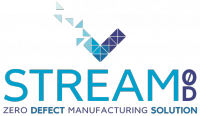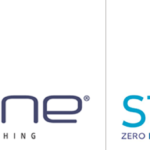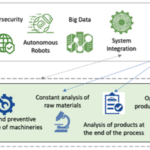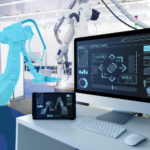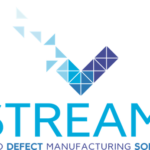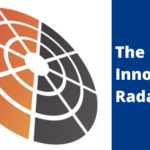Model-based manufacturing processes optimization
In an interconnected, smart factory the physical and the virtual space run in parallel to maximize process efficiency. STREAM-0D project is leading the way towards the next industrial revolution, thanks to the development and combined implementation of innovative technologies such as ROMs (Reduced Order Models).
Nowadays, manufacturing strategies throughout the whole world are evolving towards digitalization of processes, generating various examples of the same paradigm (e.g., Industry 4.0, Industrial Internet, Made in China 2025, service-oriented manufacturing, and cloud manufacturing) to prepare for the next industrial revolution.
These strategies have emerged in different cultural environments, but they all share the common objective to achieve smart manufacturing, creating an interconnected, smart factory where the physical space and the virtual space run in parallel to maximize the processes efficiency. To fulfill these objectives, the seamless integration and fusion of the two spaces is crucial, starting from the shop-floor that is at the heart of manufacturing.
Smart factory: moving from physical to virtual spaces
The integration and fusion of the physical and virtual spaces in manufacturing processes is another key step of the evolution trend of the shop-floor itself. This evolution started from a situation where only the physical space was present in the shop-floor and processes were run manually thanks to the experience of the operators, leading to low accuracy and efficiency, high variability and a lack of understanding of the process behavior. Then, it became possible to install more and more sensors in the production lines, supporting the production with off-line tools such as CAD systems and other simulation software, but without the availability of real-time connection methods.
Interaction between the physical and the virtual space is possible today: communication technologies have enabled real-time sharing of data from different areas of the shop-floor, paving the way for Industry 4.0 and the other manufacturing strategies highlighted before.
Moving from the current scenario, the future manufacturing processes in a smart factory will see an increasing relevance of digital tools in decision making and resources management, with data fusion and continuous two-way interaction between physical and virtual space.
STREAM-0D’s Reduced Order Models (ROMs)
The STREAM-0D project is leading the way towards the next industrial revolution, thanks to the development and combined implementation of the innovative technologies proposed by the project. Reduced Order Models (ROMs) allow the use of complex simulation models in real-time, thanks to model complexity reduction techniques that simplify it while maintaining the final required precision. A high-performance cloud database enables the real-time stream of data between the line and the cloud, making them accessible anywhere for monitoring and analysis through STREAM-0D’s dedicated user interface. Then, a ROM-based optimization module allows to take advantage of the physic representation of the process provided by the ROMs to predict the process behavior and anticipate errors in order to contrast them.
Constant availability of process information in cloud and precise processes’ behavior knowledge made available in-line through ROMs, can represent an important improvement in manufacturing processes control strategies. Control systems, nowadays, collect precise data from sensors and other digital instruments, elaborate and analyze them to drive automatic actuators, improving the control precision compared with the manual operations. While these control strategies prove to be very effective in most processes, they still face major issues when dealing with complex processes that are hard to model and to simulate. Due to the lack of accurate simulation, the current production process control is still insufficient in accuracy, overall optimization, and intelligence. ROMs allow to overcome those issues, thanks to the ability to run complex simulation models in real-time.
Exploiting the advantages provided by ROMs, the STREAM-0D system has implemented a control strategy based on process optimization and error prevention, achieved through the numerical optimization of process parameters simulated by the ROM. Considering a complete set of measured process parameter and a subset of controllable parameters, numerical optimization algorithms are used to determine the optimal controllable process parameters that minimize the process output errors in real-time against any possible configuration of measured process parameters. In addition, ROMs ability to simulate complex processes in real time allows to predict the process behavior immediately after a change in the process parameters is measured, activating a control signal that adjust the process behavior before the error is even predicted.
In addition, the complete availability of process information and the possibility of running all system modules in cloud, actively using ROMs to simulate the process’ behavior in different configurations, make STREAM-0D a powerful system not only for automatic process control, but also for process management, offline process improvement and to support process engineers during layout definition and optimization.
STREAM-0D is proving its potentialities in three relevant case studies in the automotive industry (car seals production, bearings manufacturing and breaks manufacturing) implementing all features introduced above to optimize the three manufacturing lines towards achieving zero-defects and acting as a support tools for process engineers. The next step is the replication in different sectors and processes, to lead the way towards the next upcoming industrial revolution.
—
This article was provided by STAM Srl. The main role of STAM in STREAM-0D is to provide the model-based control system (interface, programmed algorithms, software, hardware, connections) that will be tested and checked under a HIL simulated environment. STAM will also participate in the design of some of the in-line measurement stations, support the development of data-based models and coordinate the implementation of the system in one of the end users’ production lines.
Follow STREAM-0D on:
